Curious about the Croatian Cuisine? Planning a trip to the Balkan, and traveling along the Croatian coast perhaps and wondering what food to eat and dishes and drinks to try?
The Balkan, which is usually referred to as the peninsula of Southeast Europe, includes Albania, Bosnia and Herzegovina, Bulgaria, Croatia, Kosovo, Montenegro, North Macedonia, Romania, Serbia, and Slovenia. Each country comes with its own beauties, traditions, and culture, and due to that, they are great for exploring and wandering. But one of the most interesting (and tasty!) ways to meet the Balkan, as well as other countries and cultures, is through their traditional and trademark dishes.
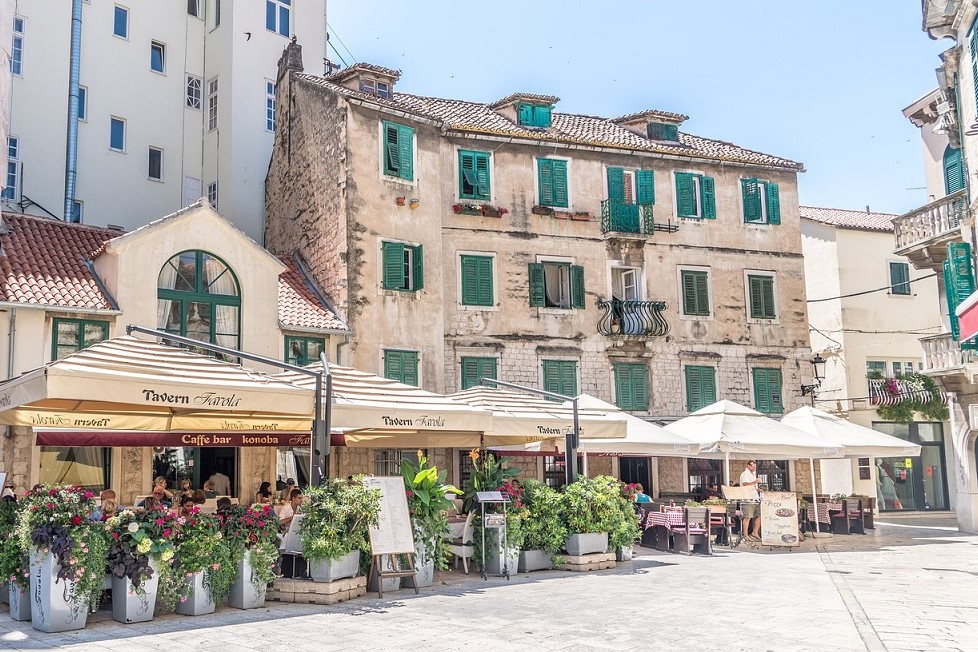
So, since the Balkan is quite big and despite the similarities, each country is different and has unique cuisine, today we’re going to focus on Croatia — one of the smaller but beautiful countries in Europe with amazingly tasty dishes.
So what is Balkan food all about? Well, it is a hearty and typically meat-heavy cuisine. While the Balkans isn’t the ideal region to travel for vegetarians or vegans if you want to sample local Balkan (and Croatian) food, it is sure to entice carnivores.
WHAT IS IN THIS POST
Versatile Tradition
Croatian cuisine is often described as heterogeneous, as well as the cuisine of the regions because each Croatian region has its own unique cuisine, trademark ingredients, and interesting flavors. Croatian traditional cuisine has been influenced by many countries, civilizations, and cultures. Continental parts of Croatia are influenced by Austro-Hungarian and Turkish cuisines, while on the Croatian coast, there are traces of ancient, Illyrian, Mediterranean, Italian, and French cuisines. All those influences present the basis of what is today known as versatile and heterogeneous Croatian cuisine.
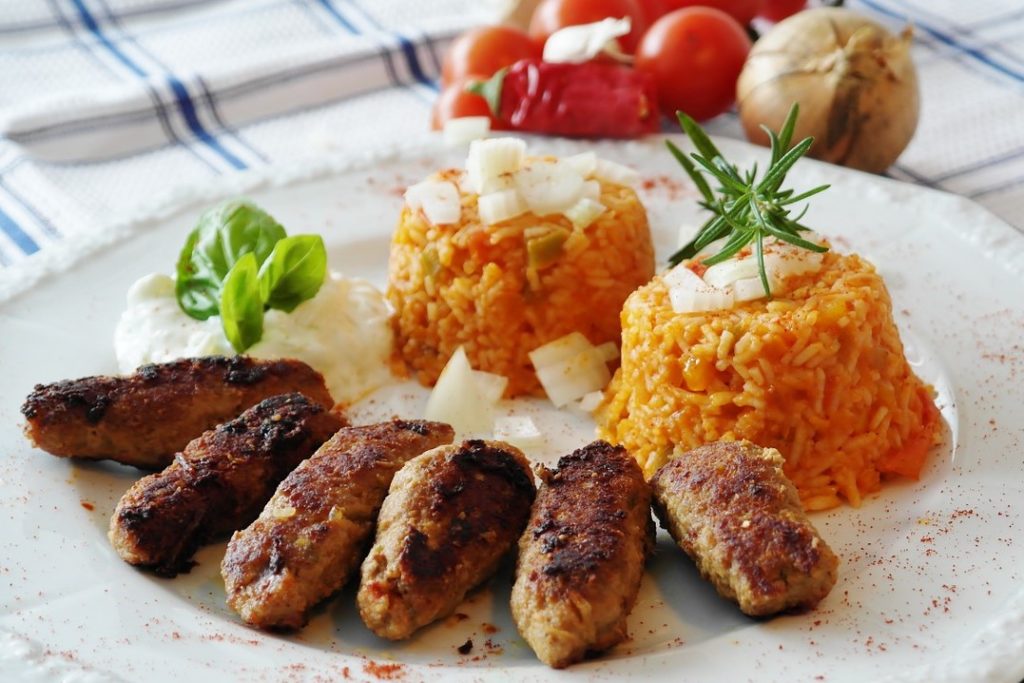
For example, Croats use spicy seasonings and herbs, especially while preparing stews and stuffed peppers, thanks to Hungary. Turkey’s influences are visible in the usage of minced meat — ćevapčići, burek, and sarma are certainly some of the Croatian (and Balkan) most famous dishes.
When it comes to the coast, the Italian influence is seen in every town and on every island — the Mediterranean diet has been there since ancient times. All of those influences (and a lot more of them, of course) have brought amazing dishes rich in flavors, aromas, and nuances, as well as a beautiful selection of interesting seasonings, ingredients, and — versatility.

Thanks to that, you can taste different traditional recipes in every region of the country. Imagine — no region is the same and thanks to that, a true gastronomy experience awaits to seduce all of your senses!
Traditional Croatian Dishes & Trademarks
Let’s explore Croatian regions and their unique cuisines! Should we start with Slavonia? Why not!
Slavonian cuisine has been influenced mostly by Hungary and Turkey. It is known for its classic meat and freshwater fish dishes, as well as dried meat products. But be aware, in Slavonia, there is no counting of the calories so just indulged in all the flavors!
Black Slavonian pig is an autochthonous Croatian pig breed and a key part of many specialties and delicacies. It is mostly prepared by the traditional recipe for pork cutlets with potatoes. But no matter how it is prepared, it is certain that it’ll offer you an amazing palette of flavors!

Croatian Cuisine: Main Dishes
Čobanac is a spicy stew made with a couple of different meat and onions, and it is a must while visiting Slavonia! Some of the most famous cold cuts and appetizers are salted čvarci (pork rinds) in the combination with kulen.
Kulen is a traditional product of Slavonia and Baranja and it is included in the list of the protected cultural heritage of Croatia. Besides the mentioned, you must try hladetina (gelatin made from boiled pork, legs, and beets), sataraš (stewed vegetables), and carp in forks — the carp is nicely roasted so its meat is juicy, while its skin is crispy. It is usually served with potatoes and vegetables.
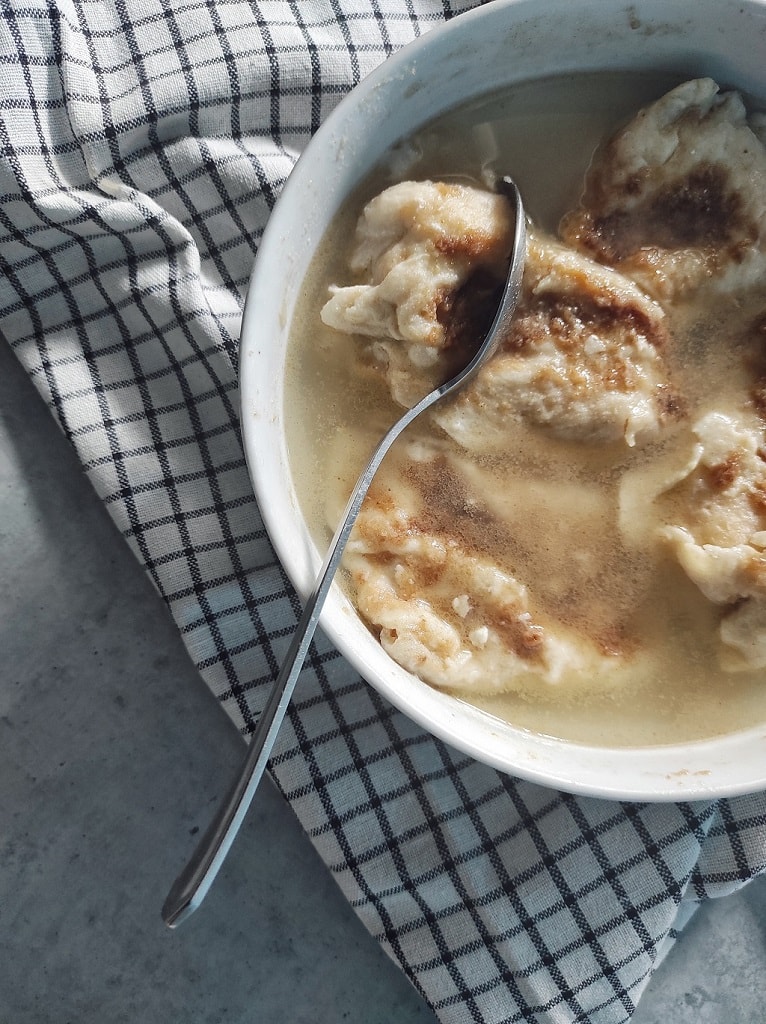
Zagorje and Međimurje have been influenced by Austro-Hungarian cuisine. There, you can find simple dishes of the poor people, as well as those recipes which were prepared for the nobility.
When it comes to the traditional dishes, štrukli are a must-try. They are prepared in numerous ways, cooked or baked, filled with fresh cheese, pumpkins, squashes, poppy seeds, beets, cherries, apples, different types of jam, and more. One of the oldest recipes is for cooked štrukli on the soup. This dish is simple, nutritious, and delicious.
In Zagorje, there is one quite specific pasta called mlinci. They are traditional and unique, and they have characteristic burnt-out bubbles. They are usually served with roasted turkey or some other roasted meat such as chicken, pork, or goose.
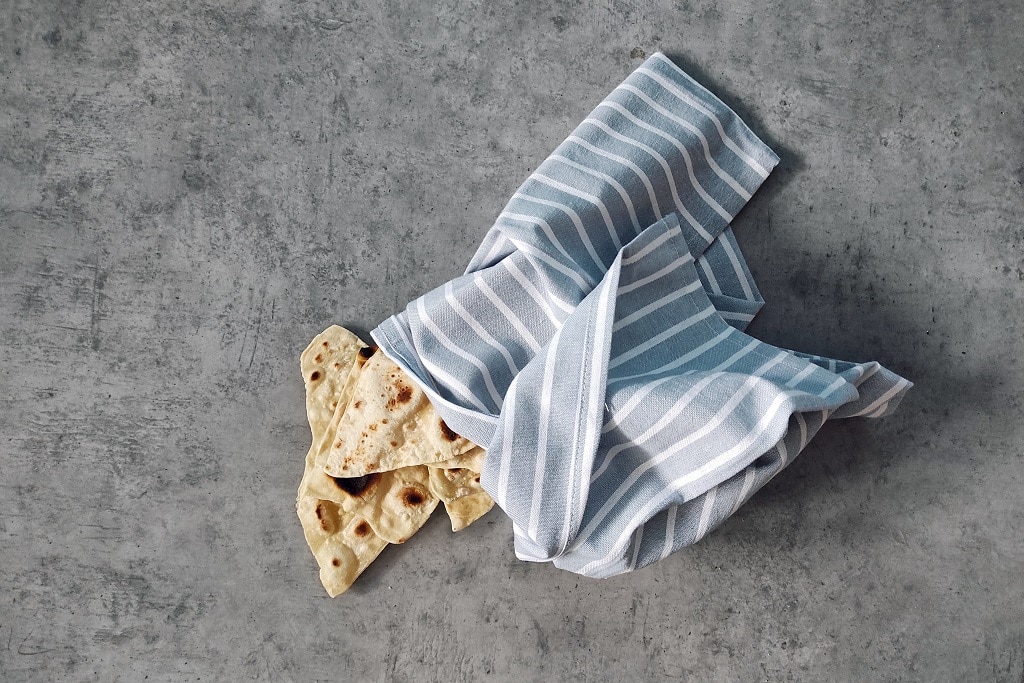
Lika and Gorski kotar were quite poor regions throughout history, but their housewives knew how to make delicious dishes with simple ingredients. The basic ingredients of their cuisine are freshwater fish, mushrooms, potatoes, game, and lamb.
The game stew is a delicacy in Gorski kotar. It is rich in meat, vegetables, seasonings, and flavors, so it will certainly seduce your palate.
Lamb under peka is one of the Croatian favorite dishes. The lamb and potatoes are roasted under bell-shaped iron or ceramic vessel which is covered with coal. This is a specific way of preparation, and it offers amazing flavors in the end!
Lika potatoes (known as pole) are Croatian products under the protection of the European Union. These potatoes have a divine taste, and they are prepared quite simply — cut in half and baked in the oven. Simple but trust me, so delicious (my favorite to be honest).
Oh, and you need to try prosciutto made of game. Thank me later! Lika and Gorski kotar also have a beautiful selection of cheese – basa, škripavaca, and tounjski sir.
Now, let’s visit Istria and Kvarner! In these regions, you’ll find an amazing gastronomy selection.
Istria is known for its indigenous pasta. Fuži, pljukanci, and posutice are just a few types of Istrian original pasta that are combined with delicious sauces, meat, fish, seafood, and more. When it comes to meat specialties, boškarin and Istrian ham are a must!
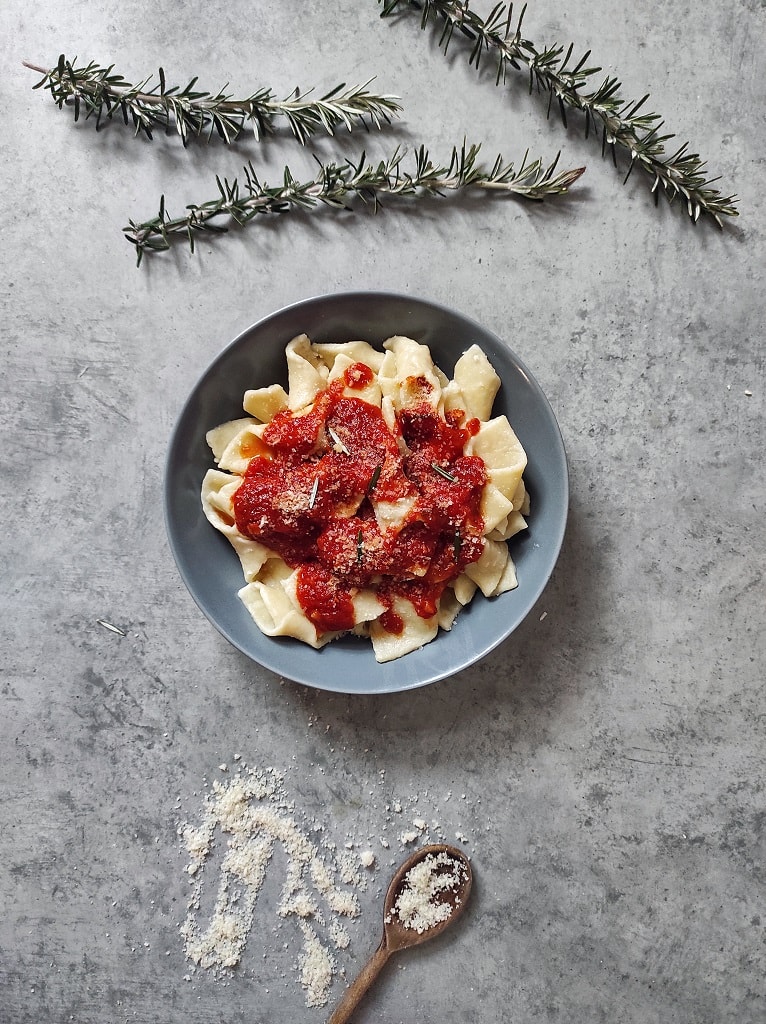
Fritaja is a traditional Croatian dish — it presents scrambled eggs with onion, asparagus, mushrooms, olive oil, and other vegetables, depending on the preferences.
Istrians also love to prepare truffles! They have a strong fragrance and quite unique taste, and they can be prepared as an appetizer or as a nice touch with the main dish. Thanks to gastronomy creativity, truffles are used in desserts too!
The Istrian trademark is definitely maneštra. It presents a stew made with meat and seasonal vegetables. Quite tasty and nutritious!
Oh, and there is one special dish that needs to be mentioned — Istrian soup which is actually not a soup. It presents a drink that is made of wine, olive oil, pepper, and sugar. The drink is served in a specific cup called bukalet. And no, you’re not drinking this mixture —- you’re dipping the bread into it!
Dalmatia is known for its simple, yet delicious cuisine. People there are using simple and everyday ingredients in order to make really unique dishes.
Risotto with prawns or some other seafood is a delicacy served in every restaurant. It is creamy, tasty, and rich in aromas and nuances. It can be white or black, and it will bring the best flavors of the sea depths.
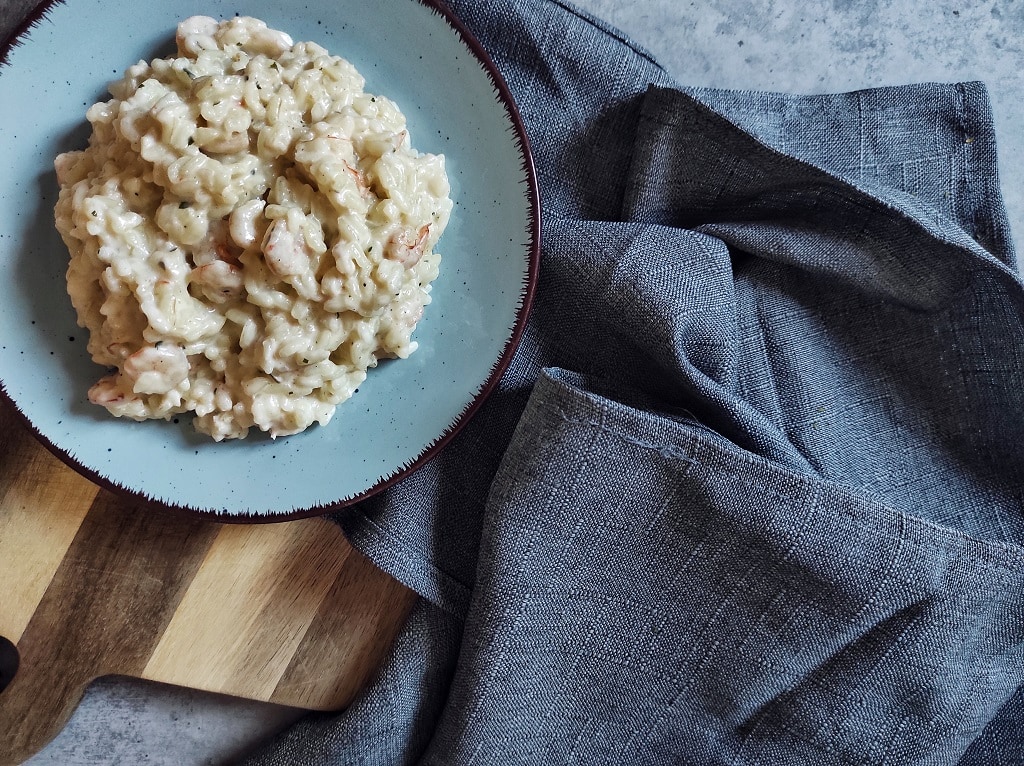
Buzara is a dish prepared by sautéing seafood (usually shellfish or shrimps) in olive oil, white wine, garlic, parsley, and tomatoes.
Pašticada is a traditional Dalmatian dish made of beef and then served with gnocchi.
Soparnik presents a homemade dough with a filling made of chard, parsley, and onion. This dish is made by the old traditional recipe and due to that, soparnik has a protected geographical indication at the level of the European Union.
Soparnik is the king of Croatian snacks and one of the most authentical Croatian item of food on this list. It is cooked in huge rounds on a traditional wood-fired oven. Olive oil and tiny pieces of garlic are placed on top while it is still warm. A great option for vegetarians visiting Croatia!
On the island of Vis, you must try komiška pogača. This bread has a filling made of tomato sauce, salted anchovies, oregano, olives, and parsley. Quite delicious! Dalmatia also has its own recipe for maneštra.
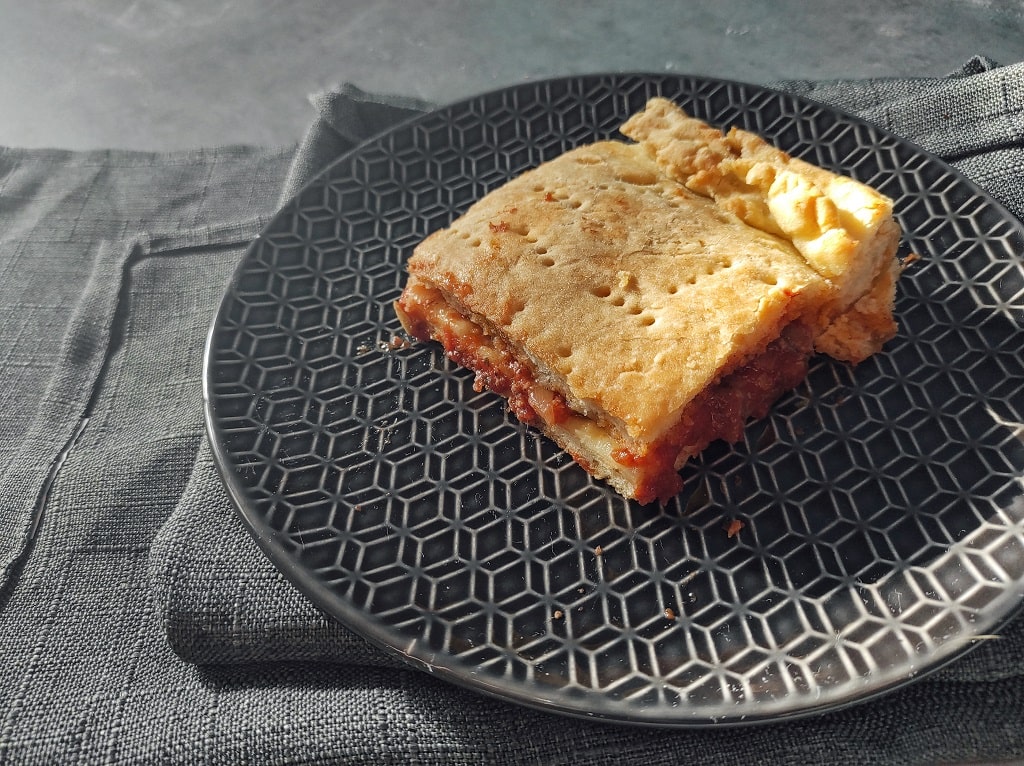
Konavle green maneštra comes from Konavle, Dubrovnik, and it presents a stew made of meat, cabbage, potatoes, and kale.
Croatian ražnjići is another staple dish in Croatia (meat skewers made from chicken or pork) served with a side dish made of grilled red and green bell peppers. It has been used since the Middle Ages, see how to make an authentic version: recipe linked here.
Croatian Desserts
When it comes to must-try desserts, make sure to taste kroštule, rožata, mandulat, and cukarini!
Zagorje and Međiumurje have quite simple but delicious desserts. Zlevanka is a traditional cake made of cornflour and fresh cheese, gibanica is a cake with tasty filling made of poppy seeds, while varaždinski klipiči are made of homemade dough and covered with cumin.
There is one specific and rich dessert that you either love or hate — međimurska gibanica is a cake with 4 different fillings. It has layers of poppy seeds, fresh cheese, walnuts, and apples! Quite a delicacy! A dessert to indulge in, when visiting Croatia 🙂

People from Split are proud of their micro-location. They think of their women as the most beautiful in the world and they will say the same about this cake… Splitska torta made from figs and almonds …is considered the world’s most delicious dessert.
A few more desserts you must try in Croatia:
- Princes krafne – cream puffs, the Croatian version of choux pastry
- Dalmatinski rafioli – ravioli-shaped cookies
- Paprenjak – Croatian peppery cookies
- Orehnjača or povitica – Croatian walnut roll
- Madjarica – Croatian layered cake
- Ledeni vjetar – Icy Wind cake
- Kremšnita – Croatian Custard cream cake
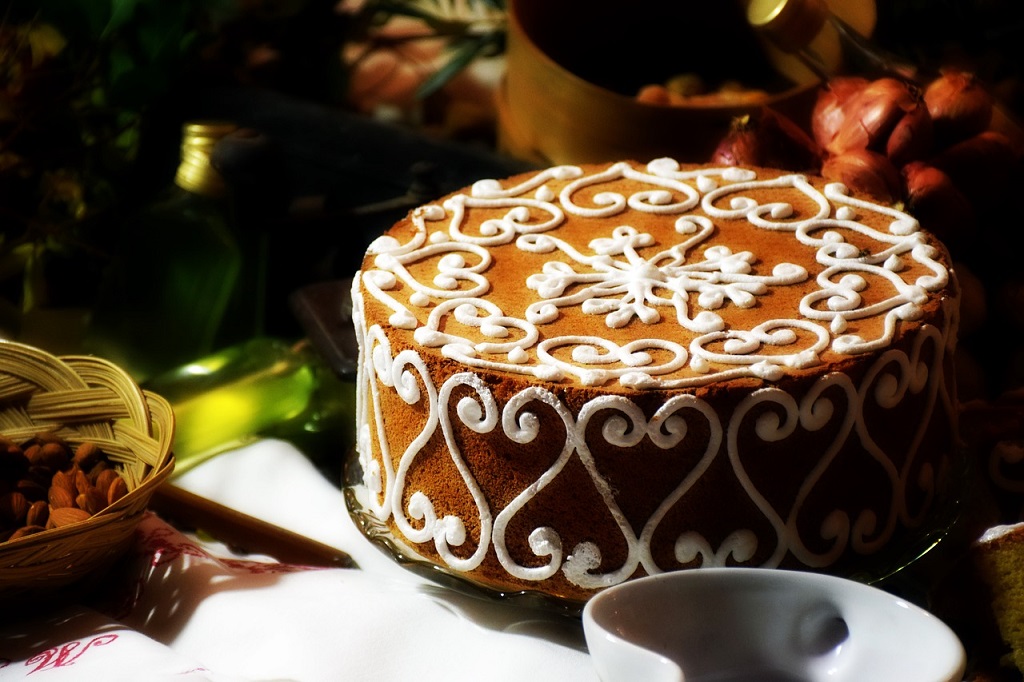
Looking for a traditional Balkan Breakfast?
Almost every country has a signature breakfast but when it comes to Croatia, people rarely have a habit of eating breakfast at all! Much like the Spanish, Croatians have no traditional breakfast! Usually, it is just something they grab from the bakery while going to work.
In the past, people from continental parts of the country had a habit of eating cornbread, polenta, and coffee substitute, in Istria people ate frittata with asparagus, while in Dalmatia, people tend to eat bread with butter and jam. But today, those habits are certainly changed and people (in case they eat breakfast) eat something which they find suitable.
For example, a classic bread and spread is simple, yet versatile breakfast because the spread can be margarine, cheese, meat spread, or Nutella. Cereals are also quite popular and in Croatia, they are eaten with milk or yogurt. Čokolino is meant for kids of all ages (and that includes adults, of course!) and it presents chocolate mixed with warm milk. Eggs are prepared in numerous ways, while meat products such as kulen, ham, prosciutto, and češnjvoke are perfect with just-baked bread. There is also one old tradition that is still popular in some households – white coffee with bread.
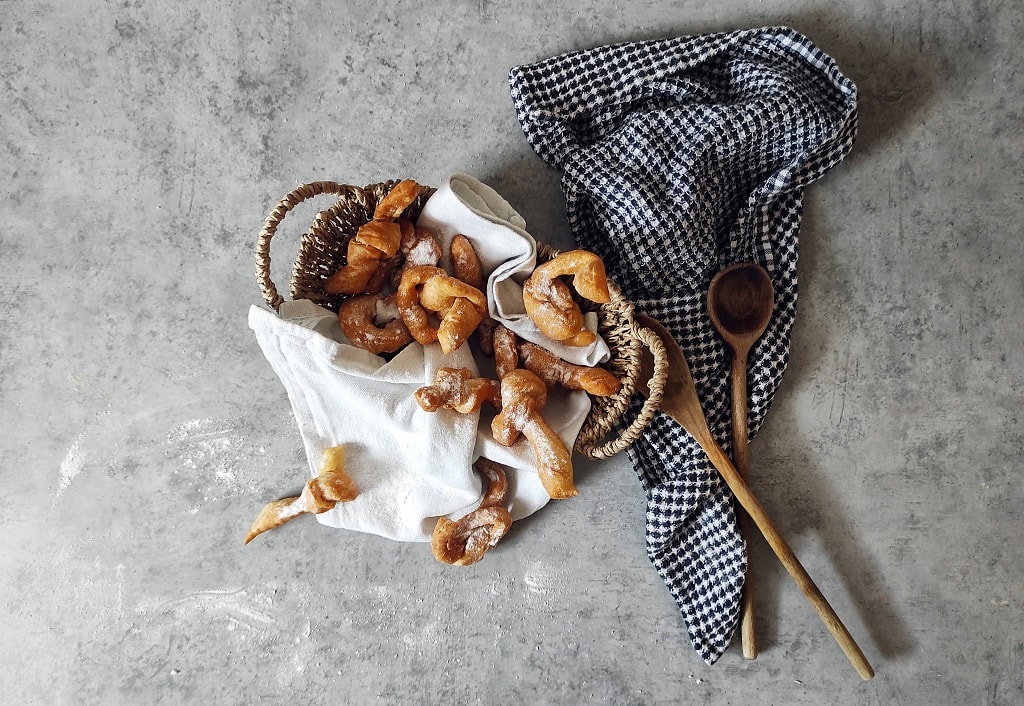
Croatian regions and islands created kroštule according to the traditional recipe but with one additional ingredient making it unique for that place. Classic Dalmatian kroštule are made from limoncello-flavored dough, Brač’s kroštule are made with a touch of kvasina (acid), in Istrian kroštule you can find white wine, while kroštule from Hvar are made with brandy. See an easy-to-follow recipe for Kroštule here.
Besides all the mentioned, Croats love to eat pastries. And with each dish (and sometimes minus the dish), the main factor of the breakfast is — coffee.
Indigenous Wines & Drinks in Croatia
Croatia is surely known for its beautiful selection of wines. From some classic varieties to indigenous types, Croatia has everything, including amazing wine roads which will take you through beautiful vineyards and wine cellars while your palate will enjoy all the wine flavors and aromas.
Croatia has a couple of wine regions — Slavonian and Croatian Danube, Croatian Uplands, Istria and Kvarner, and Dalmatia. Each of the regions has its own specific wines and aromas, so we’re going to mention a couple of them which certainly stands out!
Slavonia is known for the typical red and white wines — Pinot crni, Frankovka, Merlot, Graševina, Pinot gris, Rajnski rizling, and more. These wines have specific flavors and interesting aromas which will leave you with a quite seductive aftertaste.
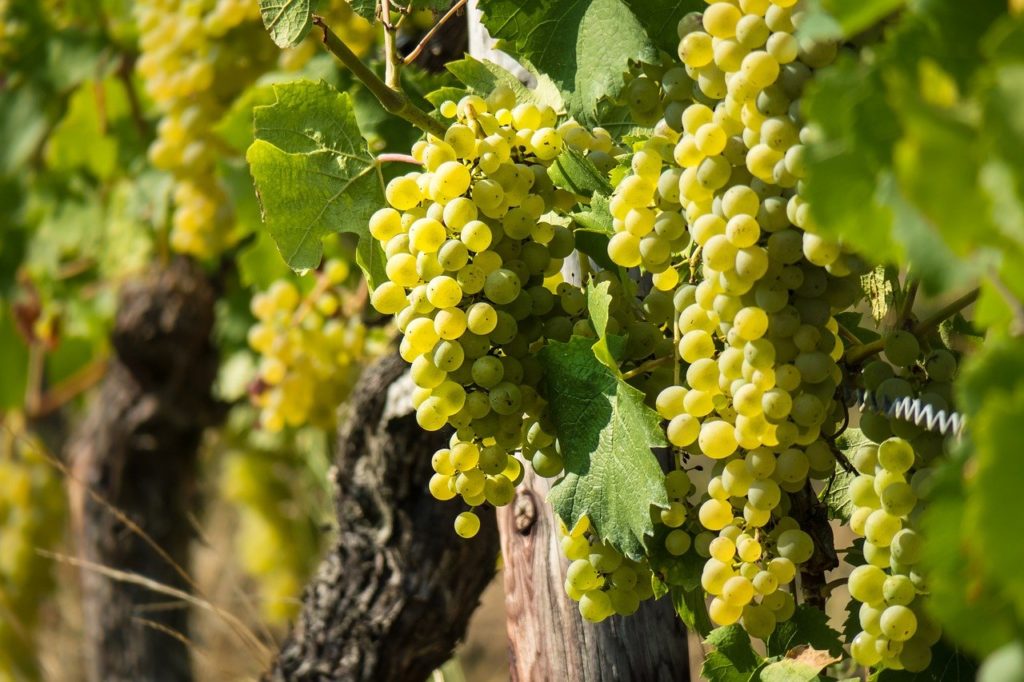
When it comes to the region of Zagorje, we must mention Cuvée Breg and Chardonnay. Zagorje is known for its love for a good wine (also known as the nectar of life) so it isn’t surprising that winemakers often get medals, diplomas, and recognitions for their wines!
In Istria, you can find some of the most delicious wines such as Istarska malvazija, Teran, and Muškat, while in Dalmatia, you must try Dingač, Pošip, Plavac Mali, and Grk.
All those wines are beautifully combined with a specific dish in order to bring the best flavors and aromas.
Besides the wines, Croatia also has a beautiful selection of beers — Ožujsko and Karlovačko are the most famous ones, but there are also a lot of craft beers (around 80 of them!) such as IPA, Aj(s) Bo(c)k, Pulfer, and more. And they are great in the combination with grilled meat!
Balkan Uniqueness
Almost every mentioned dish has been influenced in one way or the other. Since Croatia is referred to as heterogeneous, it has the best roots of other Balkan countries which are then turned into Croatian traditional cuisine.
Balkan cuisine presents a true beauty of the flavors and aromas. The recipes are all intertwined in order to bring the best of each cuisine. Balkan is known for its intensive aromas and the variety of colors, seasonings, and ingredients. Throughout the past, both Balkan (and Croatian) cuisine was influenced by the Mediterranean, oriental, and African cuisines so no wonder it offers such a variety of flavors, dishes, and recipes.
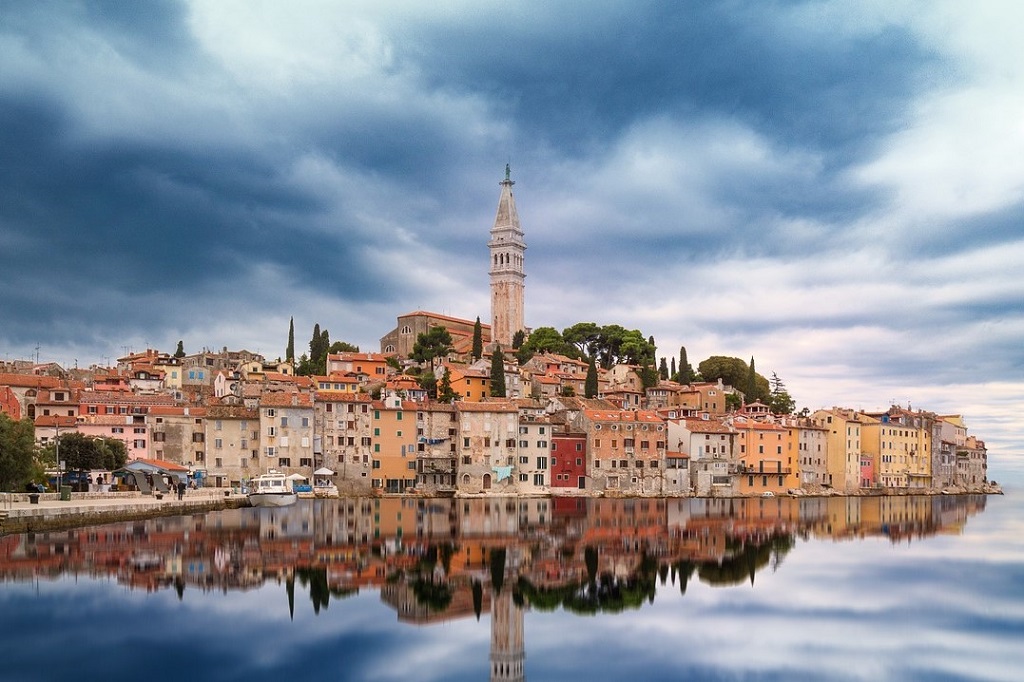
All the countries on the Balkan are connected not only by their intertwined history but also by their cuisines which present a unique combination of meat, fishes, and vegetables. Each country has its own unique recipe for a dish that is present in every country. And thanks to that, you’ll probably never try the same recipe twice. But that’s the beauty, isn’t it? Despite the connection of the Balkan countries, each of them is truly unique and comes with its own traditions, recipes, and dishes. Quite an interesting gastronomy adventure awaits you!
Book your Croatia Tours
So you are a vegetarian visiting Croatia… what do you eat?
Croatian cuisine is fairly meat-heavy and it can be difficult to eat like a local if you are a vegetarian. There are some dishes that aren’t completely meat-based. Since most of the food on the Croatian menu either comes directly from other nations ražnjići Turkey, Bosnia, Hungary, Austria, Greece, or is inspired by them… Great pizza is available in almost every place you go in Croatia.
Soparnik or Štrukli are good choices for vegetarians or Zeljanica which is burek made with spinach.
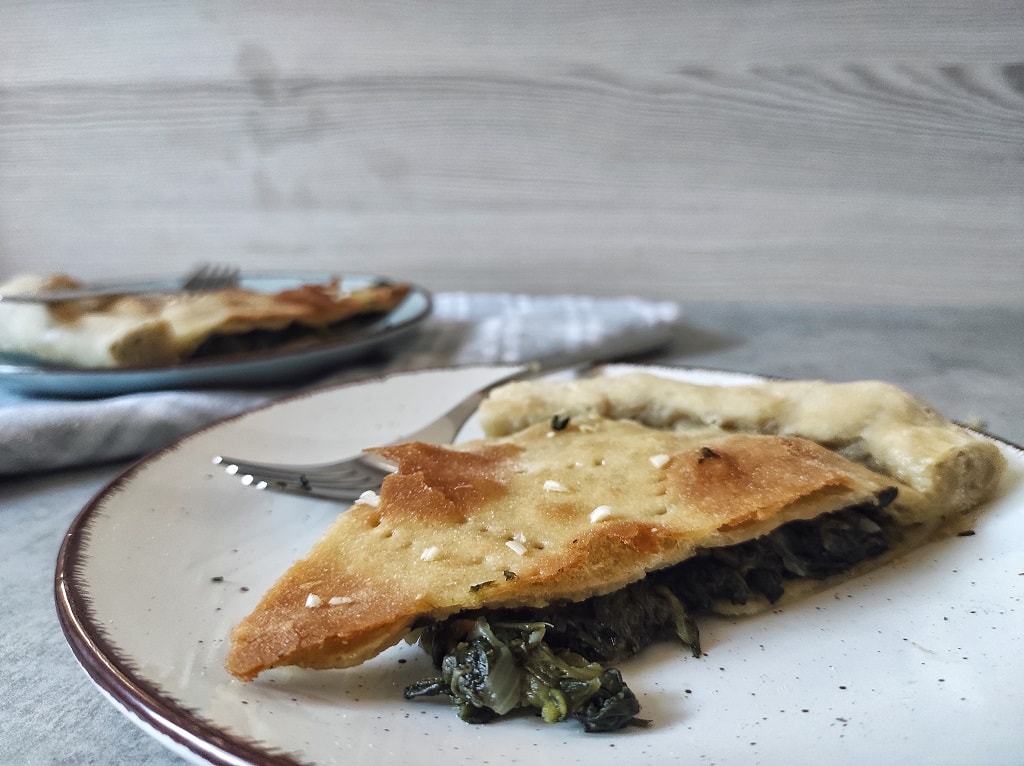
Ask for Fuži s tartufom, this Istrian pasta dish is made with locally-sourced truffles. You can find it made with both the more common black truffles or the rarer (and more expensive) white truffles.
Did you see the list of Croatian desserts, you can easily live on them 🙂
If you want to try some of the best vegetarian food in Croatia, check out this list of vegetarian restaurants
Rakija: Balkan Drink you can’t miss
Besides these classic drinks, Croatia (and the rest of the Balkan) has one more alcoholic drink a must-have in every household — Rakija (really alcoholic and strong brandy). To put it simply, rakija is a fruit brandy. It can be made from plums, apricots, grapes, pears, peaches, apples, figs, blackberries, cherries, and quince. Bought rakija usually contains 40% ABV (alcohol by volume) but in Balkan, rakija is usually made at home so it contains around 50% ABV.
Rakija is considered to be a nectar of life, and in Balkan, you’ll often hear that rakija is the cure for everything. If you have a headache, drink rakija. If you are nauseous, drink rakija. If you are happy, drink a shot (which basically means rakija). So yes, rakija is quite important in Balkan!
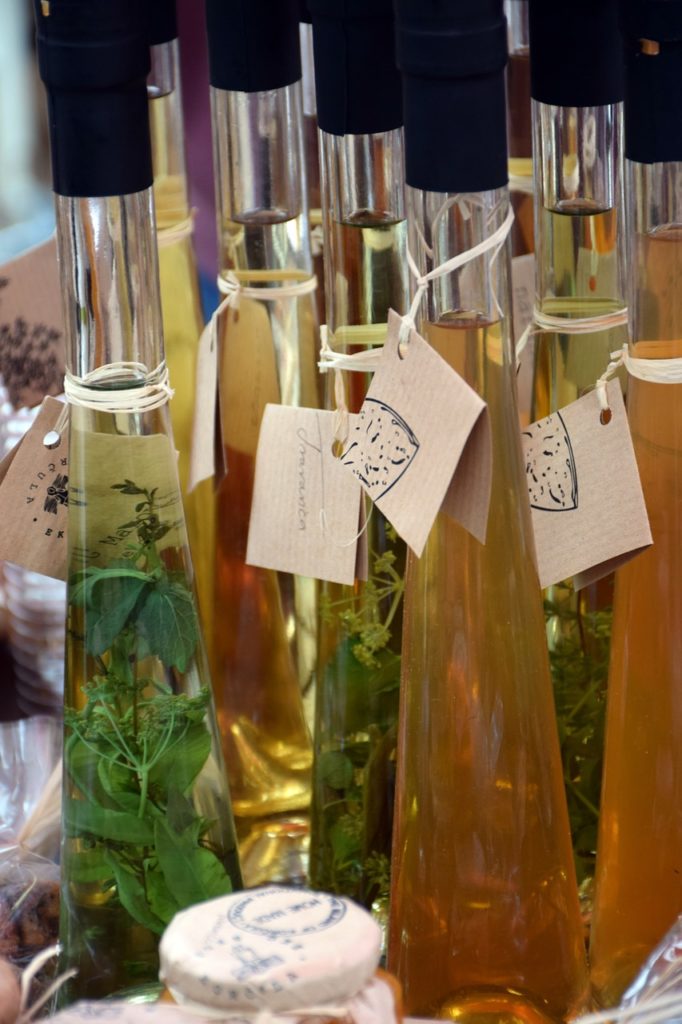
Of course, there aren’t only alcoholic beverages in Croatia and Balkan. There is one more drink that needs to be mention and there is a whole philosophy of taking that drink. I’m talking about coffee.
Balkan Coffee & Burek
What is Burek? Along with a good cup of coffee, if you want a typical Balkan breakfast, a light meal or a snack, you cannot go wrong with Burek! Burek is a kind of pie made with phyllo and a number of different fillings — generally potatoes, cheese, spinach, or some kind of meat (usually pork, beef, or lamb). It is always at every bakery throughout the region.
Croats aren’t really complicated when it comes to coffee — they want the classics such as Turkish coffee, espresso, white coffee, or cappuccino. Of course, there are a lot of variations of coffee depending on the amount of coffee and milk, but these mentioned are some of the classic ones. But the philosophy about drinking coffee in Balkan is this — it takes hours and hours. Here, coffee means sitting, drinking, and talking for around 2 hours about all the important and unimportant topics. And we love it!
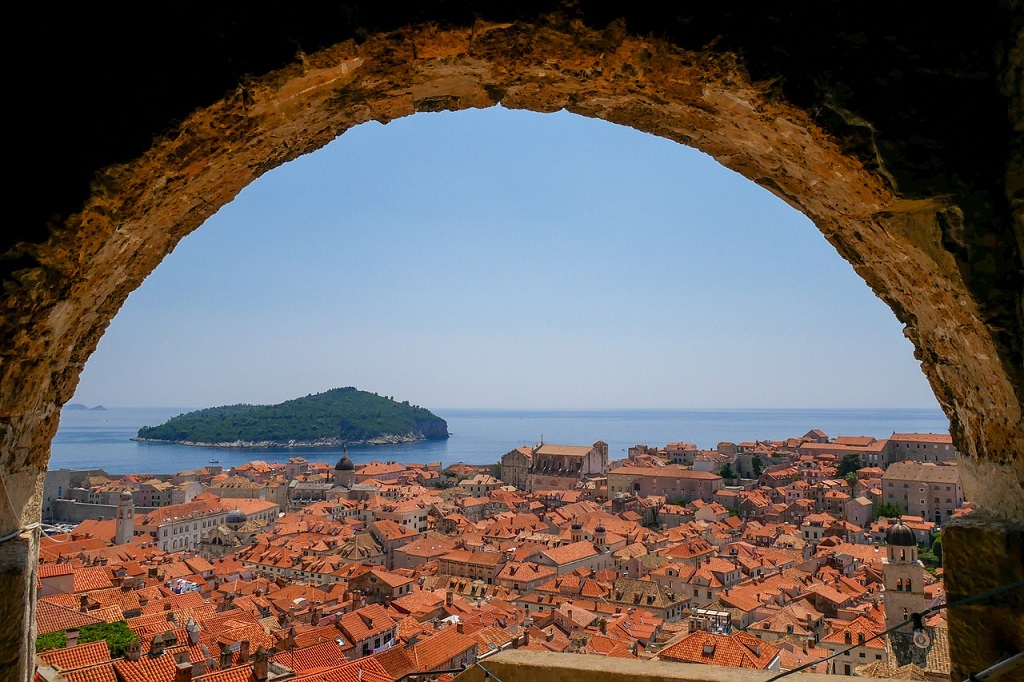
*Photos and words by Ana Cerovski
Ana Cerovski is an experienced writer for restaurants and wineries at KitchenToast. She loves to photograph and travel, especially to Korčula which is her second home and the best inspiration for new recipes and flavors.
Hope you enjoyed this Guide to Balkan and Croatian Cuisine. If you’re looking for more Croatian recipes or dishes, visit Ana’s site KitchenToast!
You might also like these other Food Diaries:
11 Portuguese desserts you must try
Japanese Food you must try in Japan
Best ice cream shops in Plano, Texas
French Pastries you will love
Spanish Dishes, Drinks & Desserts
10 Moroccan dishes you must try
20 Iconic Food in Italy you can’t miss
PIN IT FOR LATER
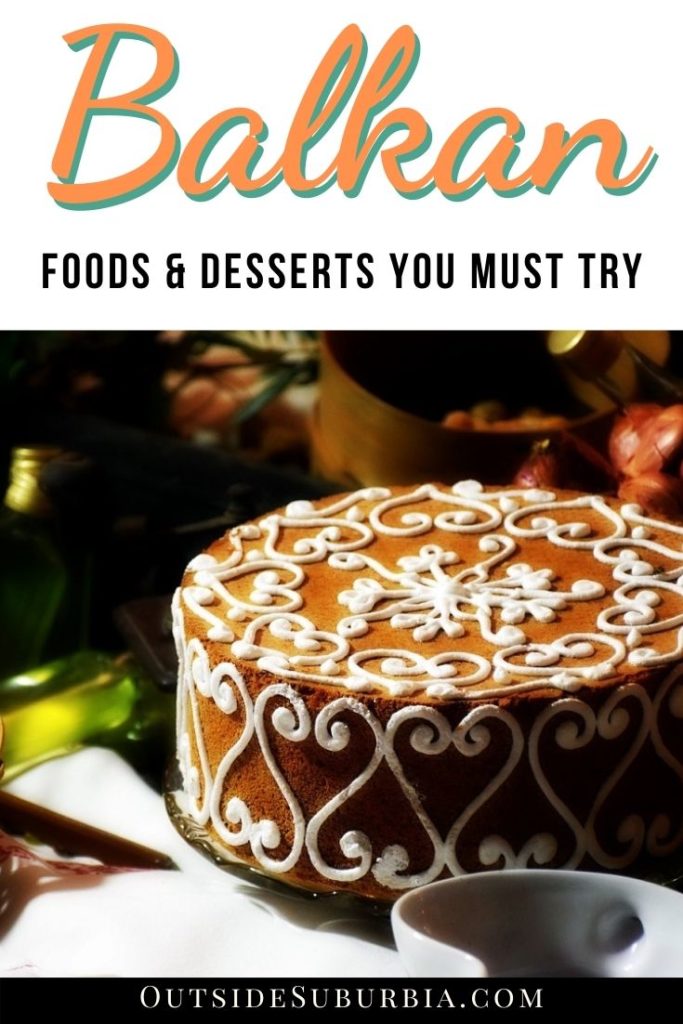
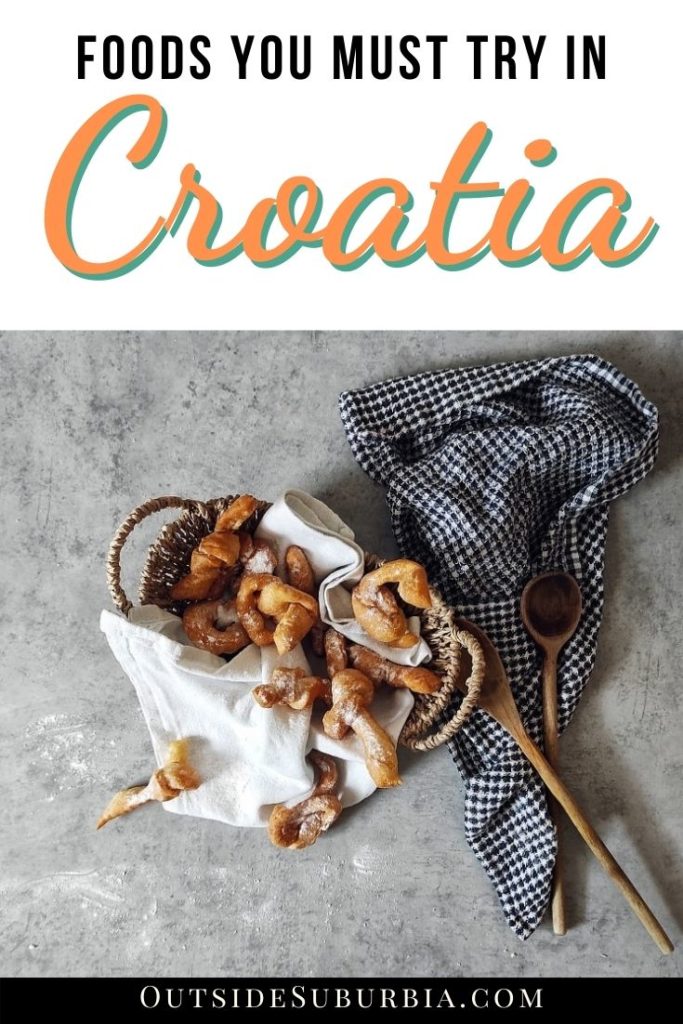
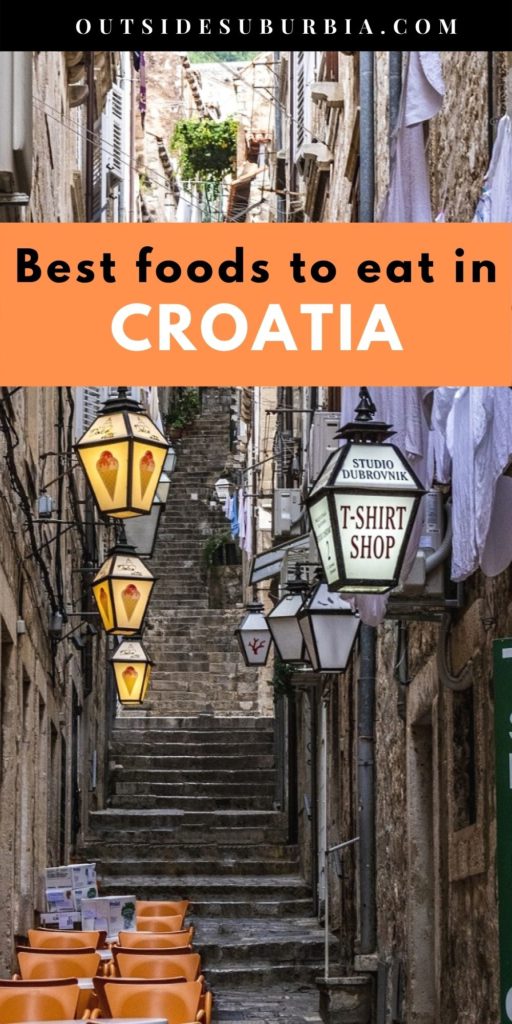
Note: This post may contain affiliate links, partnership or sponsored content. If you purchase an item via one of these links, we may receive a small commission at no extra charge to you. But as always images and opinions are our own. For more information on our affiliates and privacy policy at Outside Suburbia see here.
CONNECT WITH US
